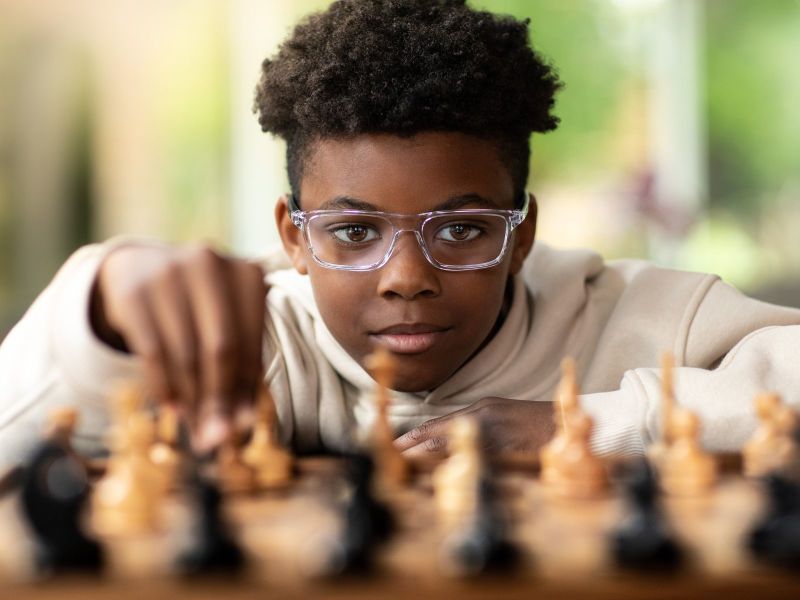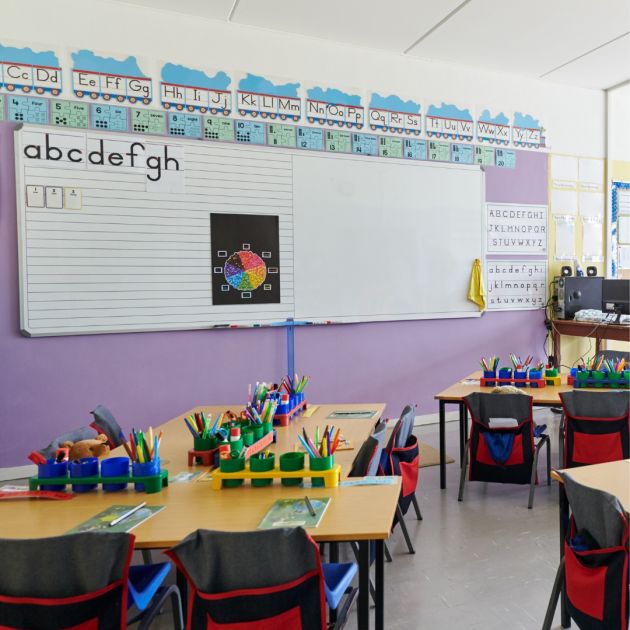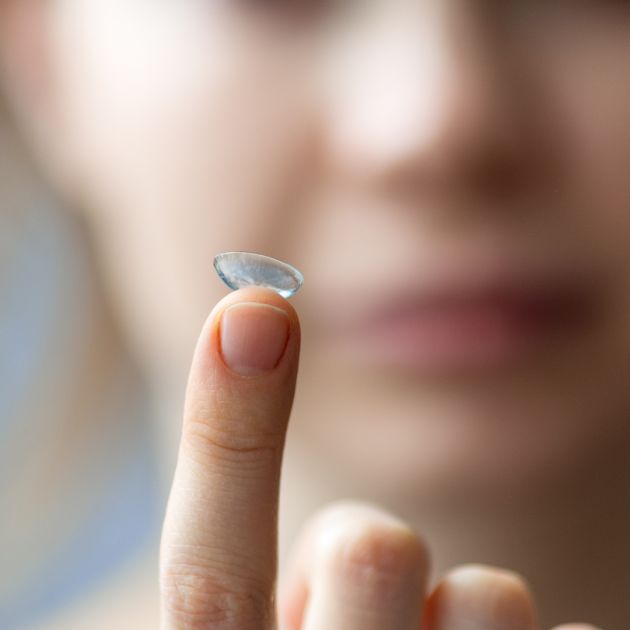Managing short-sightedness in children: glasses and contact lenses for myopia
Aug 10, 2023 in Children's Eye Care

What is myopia?
Myopia, or as it’s more commonly known, short-sightedness, is a very common eye condition that affects around 1 in 3 people in the UK. [1]
Myopia is a condition where viewing distant objects may be blurred, while closer viewing remains clear. This is because when light rays enter the eye, rather than focusing on the retina, they focus in front of it - resulting in a blurry image. Myopia can affect day-to-day activities such as watching the TV, taking part in sports and looking at a classroom whiteboard.
Typically, myopia starts to develop in children between the ages of 6 to 13 and will be picked up by an optometrist as part of the child's routine eye examination. The degree of myopia can worsen until the child's eye stops growing, which is normally in their early 20s.
How do I know if my child is short-sighted?
Children are very good at not telling us how they feel, which often means that symptoms of myopia can be missed. However, here are a few common signs to look out for in your child, which may indicate short-sightedness. These include:

- Experiencing frequent headaches
- Rubbing of eyes
- Squinting
- Having difficulty reading words from a distance, such as those on a school whiteboard
- Sitting closer to the television when watching, or holding devices such as mobiles or tablets close to their face when using them.
Family history of myopia can also increase a child’s risk of developing it.
Can myopia be cured?
Myopia cannot currently be cured; however, it can be managed through the use of prescription glasses or contact lenses. The earlier short-sightedness is diagnosed, the more support we can provide the child and help improve the clarity of their distance vision.
What is myopia management?
Historically myopia could only be managed by issuing standard prescription lenses. However, as technology has advanced, newer options have become available to try and influence the development of myopia, reducing its overall impact.
Typically, the earlier you start managing a young person's myopia, the better the results.
At Leightons, our expert teams are ready to help you and your child manage their myopia with tailored treatment solutions, because we know that every child is different.
Glasses for myopia
Prescription glasses have long been used to help correct short-sightedness. Using a concave (minus) lens, light rays, which once focused in front of the retina (causing a blurred image), are diverged and directed to focus on the retina instead, giving a focused image. Of course, the more myopic a person is, the more the light needs to be diverged, which results in a higher prescription and slightly thicker lenses (although these days lenses can be thinned too).

Lens technology has vastly evolved over the years, and at Leightons, we are proud stockists of MiYOSMART lenses: the ground-breaking, non-invasive optical lenses from HOYA that manage and curb the progression of myopia in children by an average of 60% [2]. Created with the most active children in mind, MiYOSMART lenses are made using lightweight, impact-resistant materials and can be fitted into a majority of our kids’ frames.
If you would like to find out more about MiYOSMART lenses, and see whether they are suitable for your child, book an eye examination today at your nearest Leightons practice.
Contact lenses for myopia
Contact lenses are another great product which can be used for myopia management. While there are plenty of soft contact lenses available that will correct the vision, our most recommended contact lenses for myopia management are MiSight® 1-day lenses by CooperVision. These lenses have been designed to slow the progression of myopia, and studies suggest that they can do so by up to 59% [3].

Another specialist lens used for myopia management is Ortho-K (Orthokeratology) contact lenses. These are rigid contact lenses that should be worn overnight to gently reshape the front of the eye. After a night of wearing these, once removed in the morning, they allow for a day of contact lens/glasses-free vision.
Please note: Orthokeratology is only available in selected Leightons practices, please check with your nearest practice.
Which type of myopia management is best for my child?
The type of myopia management chosen for your child will entirely depend on their needs and lifestyle. Some myopia management options will be more suitable than others, so let's have a look at some of the other lifestyle considerations:
Glasses for myopia management: These are ideal for youngsters who are not quite ready to venture into the world of contact lenses or perhaps are style savvy and want to wear some bold frames.
Myopia management contact lenses: These are a great option for kids who like to be active and enjoy lots of sporting and leisure activities. They are also the ideal solution for children who may prefer not to wear glasses.
Of course, it won’t be left just to you to decide which option is best; our expert team will be able to support you and find the best solution for your child.
Book an appointment
So if you suspect your child may be short-sighted, the best thing you can do is book an eye exam. The sooner that myopia is found, the more support we can offer to reduce its progression.
For that extra peace of mind, why not book your child in for the Ultimate Eye Examination? Not only is this the most comfortable eye exam for our little ones, but the Ultimate Eye Examination utilises the very latest testing equipment to allow us to see more than ever before in an enhanced imaging package.
To book an appointment, please call our Dedicated Patient Support team on 0800 40 20 20, pop into your nearest branch, or book an appointment online.
[1] https://www.gosh.nhs.uk/news/rates-of-short-sightedness-increasing-in-the-uk.
[2] Lam, C. S., Tang, W. C., Lee, P. H., Zhang, H. Y., Qi, H., Hasegawa, K., & To, C. H. (2022). Myopia control effect of defocus incorporated multiple segments (DIMS) spectacle lens in Chinese children: results of a 3-year follow-up study. The British journal of ophthalmology, 106(8), 1110–1114. https://bjo.bmj.com/lookup/doi/10.1136/bjophthalmol-2020-317664.
[3] Chamberlain, P., Peixoto-de-Matos, S. C., Logan, N. S., Ngo, C., Jones, D., & Young, G. (2019). A 3-year Randomized Clinical Trial of MiSight Lenses for Myopia Control. Optometry and vision science : official publication of the American Academy of Optometry, 96(8), 556–567. https://journals.lww.com/00006324-201908000-00003.

